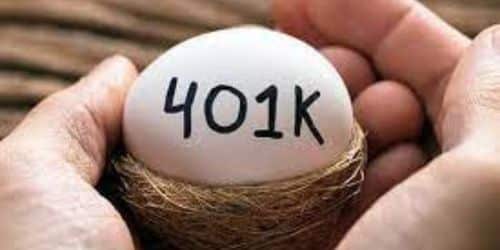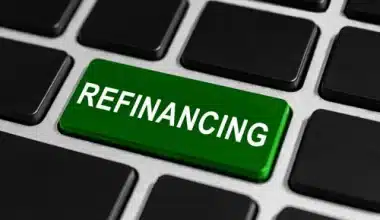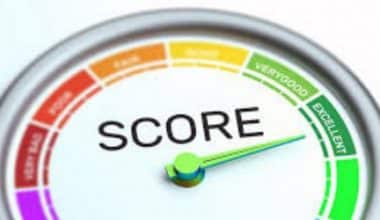If borrowing from your 401k is not an option, you may consider it if you ever find yourself in a bind and need money to pay an emergency bill. Users can find reasons to frequently borrow money against their retirement savings in 401(k) programs. It’s a lending option with relatively cheap interest that can help you pay for a significant expense, but proceed with caution. Taking out a 401(k) loan may result in penalties or long-term retirement losses if you are unable to return it. In this post, we will be looking into the rules and reasons for borrowing from 401k to pay off debt, house, and down payment.
Let us roll!!!
Reasons for Borrowing from 401K
A 401(k) is a career savings program that enables you to set money aside from your paycheck before taxes to help pay for your retirement. While personal finance experts advise against taking money out of your retirement account if you can help it, a 401(k) loan is a common way to access your account. With the intention of repaying yourself, you can borrow funds from your retirement account by taking out a 401(k) loan. Even when you’re borrowing money from yourself, a loan is nonetheless treated as one by adding interest that you are responsible for.
You will receive the same terms when taking out a loan from your 401(k) plan as you would with any other kind of borrowing: Depending on how much you loan and the interest rate you lock in, there is a payback schedule. Unless the money was used to purchase your primary residence, in which case you have a longer time to repay, you have five years under IRS regulations to pay back the loan.
When a 401(k) Loan is Appropriate
Although it should be rare, borrowing from your 401(k) may be justified if you anticipate having a sudden need for a substantial sum of money. It shouldn’t be applied to insignificant sums or non-essential products. Financially speaking, a 401(k) loan is frequently preferable to other short-term funding choices like a payday loan or even a personal loan. These alternative lending options often have high-interest rates, which lessens their appeal. Also, compared to applying for new loans with other financial institutions, arranging a 401(k) loan is quite straightforward.
Reasons for Borrowing from 401K for House Down Payment
Saving money for a down payment can be a significant obstacle to becoming a homeowner, especially since it isn’t the only cost associated with getting a mortgage. Closing charges, moving expenses, as well as any necessary renovations or furnishings for your new home, may all require funding. If you’re strapped for funds, taking money out of your 401(k) could help you pay for your down payment. This, however, has serious disadvantages.
Can you use Your 401(k) to Buy a House?
You can really purchase a home using the funds in your 401(k). This is a brief explanation of how 401(k) accounts operate:
- Pre-tax money from employees’ pay as well as money from self-employed people can be contributed.
- On behalf of the company, contributions may also be made by employers and independent contractors.
- Companies have the option to match a portion of employee contributions.
You must pay taxes at your current tax rate on the entire withdrawal amount when you take money out of your 401(k). Also, you’ll pay a 10% early distribution penalty if you’re under the age of 5912 (or 55 if you’re no longer employed by your employer).
Reasons on How to Make a Borrowing on House Down Payment With your 401k
While it is conceivable, it is typically not advised to fund a down payment from a 401(k). Yet, there are two basic methods to go forward with the reasons for borrowing 401k with a down payment:
#1. Borrowing Against Your 401k for a House Down Payment
If you want to use your plan to finance a house down payment, reasons borrowing from your 401k is usually the better choice. You can normally borrow up to 50% of your vested account balance or $50,000, whichever is less if your employer’s plan permits employees to take out loans against their 401(k) accounts. Until you have paid back the loan, you must make more or less equal installments that must be made at least quarterly and include interest. Usually, you’ll have five years to pay it back.
#2. Make Money out of Your 401(k)
When borrowing a 401k for a house down payment, a withdrawal is typically a bad choice. The IRS permits people to take early withdrawals prior to age 5912 as a consequence of an “immediate and substantial financial need,” such as purchasing a home if your employer’s plan permits hardship distributions.
Although purchasing a home might not seem like a hardship, the IRS governs these kinds of distributions in that way. You won’t be required to repay the money you borrow, nor will you be permitted to do so. You must pay ordinary income tax on the amount you withdrew, as well as an early withdrawal tax penalty of 10% if you are under the age of 5912.
#3. Options for Making a Down Payment From Your 401(k)
Instead of leveraging your 401(k), there are safer methods to accelerate your route to homeownership (k). Here are four options to consider.
#4. Instead, Use your IRA or Roth IRA.
For qualifying first-time homebuyer withdrawals, the IRS makes an exemption to the rule that you must be 5912 to obtain penalty-free distributions from your IRA. Any early payouts up to $10,000 must be used to purchase or construct your first house in order to avoid paying the additional 10% tax.
#5. Obtain a Mortgage with Government Approval
When you apply for an FHA loan and have a credit score of at least 580, you can put down as little as 3.5%. You don’t need to have a lot of cash on hand because you can finance the closing costs and early mortgage insurance premiums.
#6. Obtain a Conventional Mortgage with a Modest Down Payment.
You can obtain a conventional loan with a modest down payment if your credit score is at least 620. You might wish to pay special attention to loans designed for first-time homebuyers. They include the HomeReady or Standard 97 loans from Fannie Mae, as well as the Home Possible and HomeOne loans from Freddie Mac.
#7. Look into Programs to Help with Down Payments.
First-time homebuyer programs are offered by state housing finance agencies, neighborhood nonprofits, federal agencies, local governments, and other groups.
Borrowing from 401K Rules
It’s a typical tactic to borrow money from a 401(k) to get through tough times. There are benefits to it, such as the fact that you pay interest to yourself rather than a creditor and that you don’t need strong credit to be approved for a 401(k) loan. Some Americans come to the conclusion that these benefits outweigh the significant drawbacks, such as foregoing prospective investment earnings on borrowed funds. Here are seven rules you should know if you’re trying to decide whether it makes sense in borrowing money from your 401k retirement account.
#1. A maximum of $50,000, or 50% of your Vested Balance, maybe Borrowed.
The maximum 401(k) loan amount is $50,000 or 50% of your vested balance, whichever is less. Naturally, you are only permitted to borrow the amount that is available in your 401(k), so if your balance is lower, you will not be able to obtain a loan for the entire permitted amount.
#2. The Loan Repayment Period is Usually Five Years.
A 401(k) loan has a five-year grace period after which it must be repaid. In order to avoid early filing fees and other tax repercussions, which are detailed below, it is imperative that you repay the loan on time.
#3. You Cannot Borrow Under all 401(k) Plans.
Also, one of the rules in borrowing 401k is that you cannot borrow under all plans. You can’t always borrow money against your retirement account with 401(k) plans. Also, you won’t have this choice if your company forbids it. To find out if you can borrow and what the maximum borrowing limits are, you must contact your plan administrator.
#4. You Might Have to Pay Back the Money by Tax Day the Following Year if you Lose your Employment.
You used to be required to pay back your loan within 60 days after quitting your job. The Tax Cuts and Jobs Act, however, modified the restrictions in 2018. You now have until Tax Day of the year in which you withdrew the money to make the necessary payments. If you borrowed money in 2022, you will need to pay it back in full by either April 17, 2023, or October 16, 2023. The hazards of borrowing are slightly diminished by the extended deadline. Yet it can be challenging to pay back your loan in full if you take out a loan now, spend the money, and then experience an unexpected job loss.
#5. You’ll be Subject to a Penalty if you don’t Repay Your 401(k) Loan.
If you default on a 401(k) loan, it is regarded as a withdrawal or distribution and is therefore subject to the 10% early withdrawal penalty that applies to withdrawals made before the age of 59 1/2. When you take into account the possible losses of the gains your money may have achieved if you had kept it invested, that might possibly be a very expensive expense.
#6. If you Borrow From Your 401(k), you Will be Responsible for the Interest.
You must pay interest on the loan when you take a loan on your 401(k). The good news is that you will be responsible for covering that interest. The interest rate, which is often based on the current prime rate, will be decided by your plan administrator. The bad news is that you will use after-tax funds to pay the interest on your 401(k) loan. You are still subject to ordinary income tax on distributions when you withdraw money as a retiree.
401(k) Withdrawals are an Alternative to 401(k) Loans.
In most cases, borrowing from your 401(k) instead of taking money out is a better option if you need to use the money from your retirement savings right away. A loan is preferable to other options because:
- 401(k) withdrawals before 59 1/2 are exempt from the 10% early withdrawal penalty.
- In order to prevent your 401(k) from losing out on all potential investment gains between the time of the withdrawal and the time you retire, you’ll reimburse the money.
- If your plan permits it, you should seriously consider taking out a loan rather than withdrawing from your 401(k) and risking fines and losing returns for the remaining years until retirement.
Reasons for Borrowing from 401K to Pay Off Debt
In essence, you are borrowing your own money when you take out a loan from your 401(k). To borrow the money, you won’t need to go through a lending approval process. There’s probably a quick and easy way to do this on the website if you set up internet access. Something has both good and bad aspects, but we’ll keep it under “pro.”
Advantages and Disadvantages of Borrowing 401k Loans to Pay Off Debt
Pros of Borrowing to Pay Off Debt With a 401k
- Flexible Repayment Options: Fund managers provide flexible repayment alternatives because they want you to promptly and easily repay your 401(k) loan. Direct debits can help you remember to pay, and early repayments aren’t penalized.
- Minimal or Non-Existing Lending Costs: Though you may pay a small origination and administrative fee, 401(k) loans are the cheapest. This is most likely your best choice if you have to borrow money to pay off debt.
- Neutral Effect on Retirement: It’s a frequent myth that taking a loan out of your 401(k) will hurt your retirement savings. Only when you do it during a bull market does it happen? But, since you pay the money back with interest, the effect is neutral.
Disadvantages of Reasons for Borrowing to Pay Off Debt With a 401k
A “bull market” is one in which stock prices are steadily rising. That indicates that the value of the money in your 401(k) plan is rising. You might lose those potential profits if you remove them while that is happening. The most prevalent defense of 401(k) loans is this one, although it only applies when the market is bullish. The following are some other real “cons”:
- The danger of Job Loss: No work is guaranteed to be secure, as we all discovered in 2020. The IRS mandates that you repay the remaining balance on your 401(k) loan within sixty days if you depart your employment while still owing money on it. If you don’t, the loan will be considered an early withdrawal and you’ll be charged 10% plus income taxes.
- This year, the S&P 500 is up 20%. A 401(k) loan’s timing should be properly thought out. With the S&P 500 up 20% this year, withdrawing from your retirement savings may not be wise. Despite having a higher interest rate, a personal loan would be less expensive.
What Are the Rules to Borrow from 401K?
401(k) loan rules:
- Just $50,000, or 50% of your vested 401(k) value, may be borrowed in any 12-month period.
- Each paycheck deducts a portion of the loan plus interest after it is disbursed.
- Normally, borrowers have up to five years to pay back the loan.
Can You Borrow Money from a 401K?
For those who have $100,000 or more invested, you can borrow a maximum of $50,000, which is equal to 50% of your account’s vested value. You can only borrow up to $10,000 if your account balance is less than that amount.
What Is the Downside of Borrowing from Your 401K?
The largest drawback of borrowing against your 401(k) is the reduction in your ability to produce income in retirement because you cannot increase or add to your savings while making loan payments.
Does Borrowing from Your 401K Hurt Your Credit?
No, loans from your 401(k) are not disclosed to credit reporting agencies, but lenders may question you about them if you apply for a mortgage and may treat the loan as debt.
Is It Better to Borrow or Take from 401K?
Taking a 401(k) loan isn’t ideal, but it has advantages over early withdrawal. Stay away from taxes and fines. You can avoid paying the taxes and penalties associated with early withdrawals by taking out a loan.
Reasons for Borrowing from 401K Related Articles
- WHAT IS 401K: How It Works, Benefits & Withdrawal
- 401K Balance By Age: Everything You Should Know
- HOW TO CHECK 401K BALANCE: Simple Guide
- Can You Get a Credit Card With Your Current Credit Score?
- P2P LOANS: What Is It, Best Loans Investing, With Bad Credits & Online






